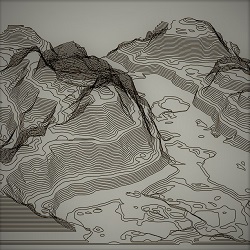INTRUSIVE TOPOGRAPHY PRODUCED BY VOLCANICITY
The volcanicity results in two types of landforms. These landforms (topography) are Intrusive and Extrusive. The formation of the landforms depends on weather the magma cools within the earth’s crust or above it. If the magma cool beneath the crust of the earth it results into the intrusive landforms. The Plutonic rocks are formed when the magma cools within the crust. The intrusive landform includes-Batholith, Lopolith, Laccolith, Phacolith, Sills and Dykes (Dikes). The batholiths are the large granite (Igneous) rocks which are formed due to cooling and solidification of the molten magma. The batholiths are usually a dome-shaped. Their sidewalls are quite steep. They are the core of huge mountains and are only exposed after the process of denudation. Example-Wicklow mountains of Ireland, the uplands of Brittany, France. The lopoliths are formed when a portion of upward-moving lava intrudes the bedding plains of the horizontally bedded rocks. Lopolith, in general, is Saucer shaped. Example-The Bushveld lopolith of Transvaal, South Africa. The laccoliths are formed when the magma is solidified in a shallow concave basin ( dome-shaped structure) whose central part is sacked downward. Example– The Karnataka Plateau and The laccoliths of Henry mountains in Utah, USA. The phacoliths are the wavy structure which is formed due to intrusion of the magma at the base of synclines and at the top of anticlines. Example-Corndon hill in Shropshire, England. The sills, when magma intrudes and solidifies between the horizontal plains of sedimentary rocks give rise to thick parallel beds called sills. The thin beds of magma results in sheets. Examples-The Great whin sill of North East England The dykes (dikes) are the perpendicular structure. They are formed due to intrusion of the magma through cracks and the fissures. On cooling, they form a wall-like structure. The dykes are also known as Stock when it has a small mushroom dome on the top. In India dykes commonly found in the western Maharashtra area. These are considered the feeders for the eruptions that led to the development of the Deccan traps. Cleveland Dyke of Yorkshire, England.







